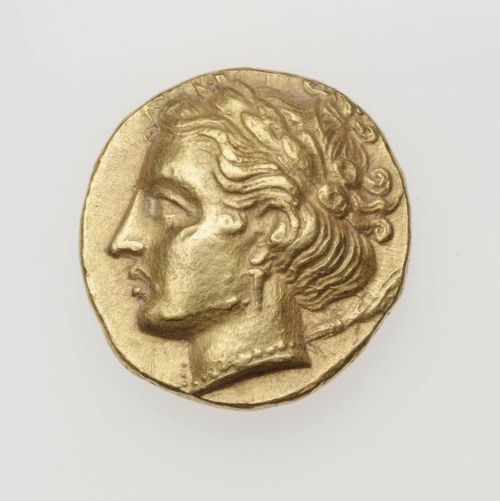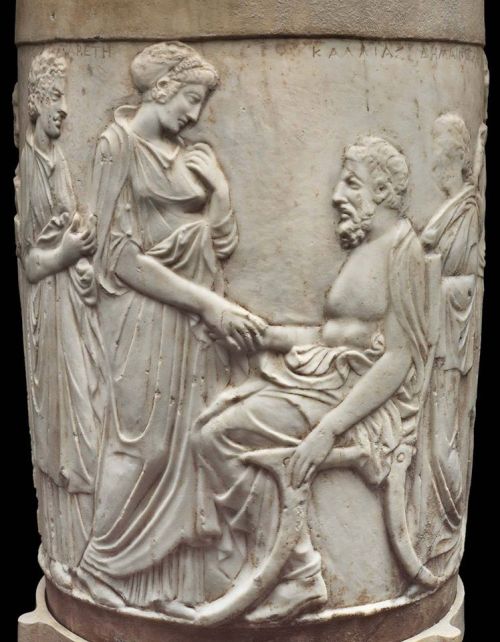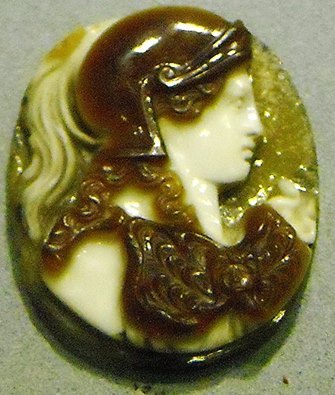#attic calendar
Δωδεκάτη/ Δευτέρα Μεσοῦντος/ Δυοκαιδεκάτη, XII day
From today’s sunset: twelfth day of Boedromion.
“Also the eleventh and twelfth are both excellent, alike for shearing sheep and for reaping the kindly fruits..”
“Of the numbers after the decade, the eleventh refers to the first element of the monad. Thus, (Hesiod) has praised this one too, as it has analogies with that (the monad), inviting to the shearing of the sheeps and to the reaping of the fruits of the earth…Both aim to take care of the body, the one to the food, the other to protection.” Schol. Erga, 774-776
“The number twelve was dedicated by the ancients to the [mundane] Gods, and to the genera that are always suspended from them.” (Proklos, in Tim. III, p. 106)
(Girl with food offering - The girl carries a tray laden with cakes and fruit in the fold of her chiton. From Corinth, about 450 BCE. Now in the Boston Museum…)
Post link
Ἑνδεκάτη/ Πρώτη Μεσοῦντος, XI day
From today’s sunset: eleventh day of Boedromion.
“Also the eleventh and twelfth are both excellent, alike for shearing sheep and for reaping the kindly fruits..”
“Of the numbers after the decade, the eleventh refers to the first element of the monad. Thus, (Hesiod) has praised this one too, as it has analogies with that (the monad), inviting to the shearing of the sheeps and to the reaping of the fruits of the earth…Both aim to take care of the body, the one to the food, the other to protection. They are typical of the eleventh day since this is the beginning of the third pentad, the one that most enhances the light of the moon…”
Schol. Erga, 774-776
(Nymph (or a woman) seated on a rock. From Myrina, early 2nd century BCE. Now in the Cincinnati Art Museum…)
Post link
Δεκάτη Ἱσταμένου/ Δεκάτη Προτέρα, X day
From today’s sunset: tenth day of Boedromion.
The Pythagoreans called the number ten: “Cosmos”, “Ouranos” and, among the Muses, Ourania, “Pan”, “Heimarmene and Aion/Aeternitas”, “Kratos (Strength/Power) and Pistis (Faith) and Ananke (Necessity)”, “Atlas” and, in a word, “God”, “Phanes” and “Helios” - and “Panteleia” (accomplishment/fulfillment of all things). (cf. Iambl, Theol. Arithm. 80-86)
“The cosmos is, as we have seen, the only one of its kind and unique (i.e. a Monad); next we discover that it is necessary that there is the tangible and visible in it (i.e. a Dyad); next that since there is considerable separation between these things, some third thing is needed (in order to bring them together); next we find out that the middle term involves two forms, and thus we arrive at the Tetrad. This was therefore what the Pythagorean hymn to number said as well: ‘that it proceeds from the inviolate abyss of the Monad, until it should arrive at the sacred Tetrad’ and this gives birth to the Decad which is 'the Mother of all things’. The father of the Golden Verses also glorifies the Tetrad calling it 'the fountain of ever-flowing Nature’. For the cosmos was ordered (kosmein) by the Tetrad, which proceeded from the Monad and the Triad, and it is completed at the Decad in as much as this is inclusive of all things… the decad is the number of the world…the Pythagoreans consider the decad as adapted to the Demiurgus, and to Fate.”
(Proklos, commentary to the Timaeus, III, 53; p.109, 420)
(red-figured amphora of Panathenaic shape. Zeus and Europa: In the centre is Europa riding on the bull (Zeus) to left through the sea. Behind Europa is Eros flying, holding out a taenia with crenelle pattern; below Him is a bearded male figure to left (probably Phoenix or Agenor), with laurel-wreath, bordered embroidered himation over lower limbs, endromides, and staff in right hand. From Lucania, circa 400-390BCE. Now in the British Museum…)
Post link
Τετρὰς Φθίνοντος/ Τετρὰς μετ’εἰκάδας, XXVII day
From today’s sunset: twenty-seventh day (fourth waning of the third decade) of Metageitnion.
Also: “Take care to avoid troubles which eat out the heart on the fourth of the beginning and ending of the month; it is a sacred day: especially during these sacred days it is convenient to get rid of all the activities that make you suffer, which, if at other times you need to choose them as necessary, in these days you should not.“
"Few know that the fourth day after the twenty of the month (τὴν μετ’εἰκαδα τοῦ μηνὸς τετάρτην) is the best day… He (Hesiod) eulogizes all the tetrads, the first, the second and the third…about the third tetrad, he says that few are those who know that it is better during the morning’s hours.”- that is, tomorrow morning from the dawn.
Scholia Erga, 797, 820
(Dancing woman. From Asia Minor (Myrina) 2nd century BCE. now in the Yale University Art Gallery…)
Post link
Τριακάς - From today’s sunset: Ἑκάτης δεῖπνον. The end of the Month, the Old and New - it is always sacred to the Goddess Hekate.
https://www.academia.edu/11144029/Hekate_cenni_teologici_e_culto
“the thirtieth we celebrate in Hades because of Hekate” - ie , the thirtieth day of the month (if present, otherwise the 29th, which is, in any case, called ‘thirtieth’) is honored Hekate as it is the last day of the month and at the same time, we also honor the dead (in fact, in its calendar, Pletho dedicated the twenty-ninth day to Pluto).
“The image of Hekate is erected and consecrated at the crossroads, and rites in honor of the dead have been made on the thirtieth day.”
The last day of the month must be also devoted to meditation and to the reconsideration of the work done during the month, as well as to the preparation for the new month to come. In any case, no one should undertake an important work during this last day. It is highly recommended to fast for the whole day (for example, this was the habit of Proklos)
(Stater of Lampsakos - Head of Hekate, laureate to left with pearl necklace and earring; behind the head is a flaming torch. The hair is drawn up behind and gathered in a small high knot.
Reverse: Forepart of horse with curled wings, one above, one below, jumping to right. 387–330 BCE. Now in the Boston Museum…)
Post link
Δευτέρα Φθίνοντος/ Δευτέρα μετ’εἰκάδας, XXIX day
From today’s sunset: twenty-ninth day (second waning of the third decade) of Boedromion. ‘Impure’ day. Attested are libations for the deceased and ceremonies in their honor.
https://www.academia.edu/5020720/Tradizione_Ellenica-_Onori_ai_Defunti
(Six figures are carved in low relief in a panel between the raised band at the top and the narrow fillet at the bottom. An elderly, bearded man, seats in a chair and faces left. The name, ‘Kallias’, is inscribed in Greek above his head. He clasps hands with a matronly woman standing before him. She bows her head and raises her left hand to her shoulder. The letters, painted in Greek, ‘….ito’ appear to the right of her head. A second woman stands behind her and holds a colored object in her right hand. To the left of her head is the inscription, ‘Kallis’, and to the right ‘Tarete’. A servant girl stands behind her holding two items: a box hanging from a cord in her lowered right hand, and another box in her more forward left hand. Behind the man’s chair stands a young girl with the inscription ‘Demainete’ directly above her head, and beyond her appears a man with a short beard, a strigil in his raised right hand, and a short cloak from waist to knees. The inscription, “Eubios’ is above his head, and behind his shoulder is the top of a staff or a branch. Grave marker in the form of stone lekythos. From Attica, about 390–380 BCE. Now in the Boston Museum…)
Post link
Τρίτη Φθίνοντος/ Τρίτη μετ’εἰκάδας, XXVIII day
From today’s sunset: twenty-eighth day (third waning of the third decade) of Boedromion. The twenty-eighth- Τριτομηνίς- is always sacred to Athena.
(Head of Athena - cameo sardonic agathe - Naples Archaeological Museum)
Post link







